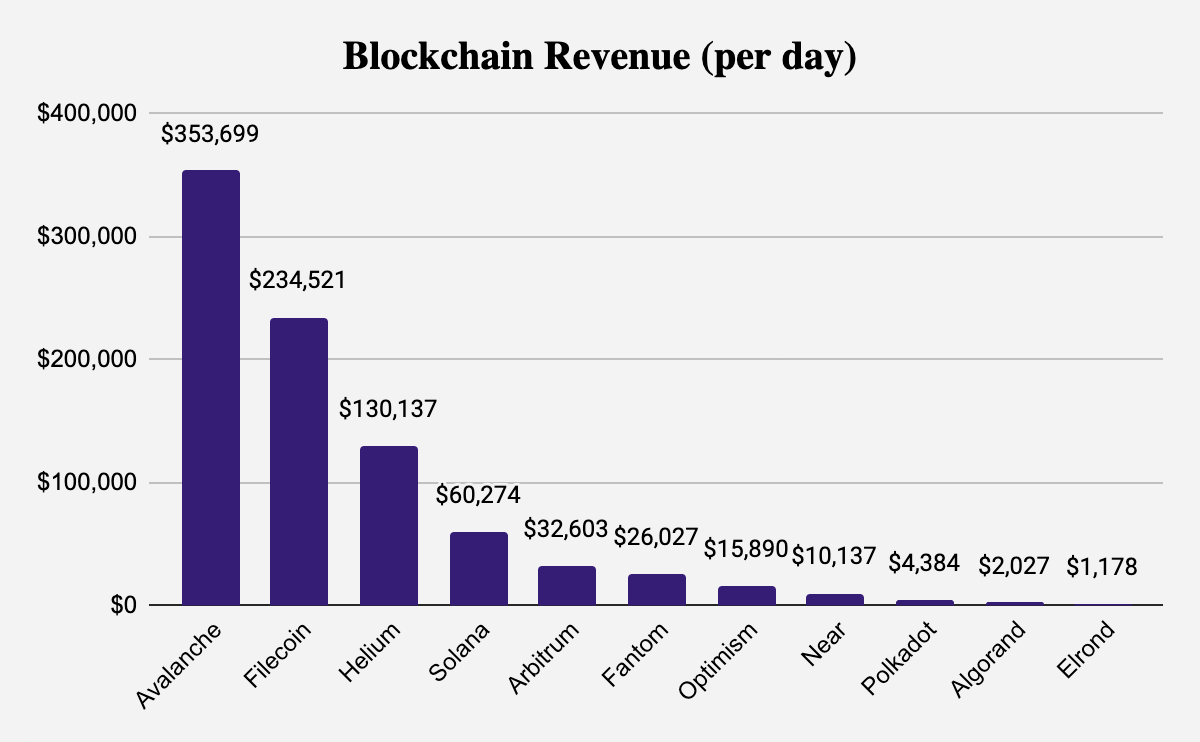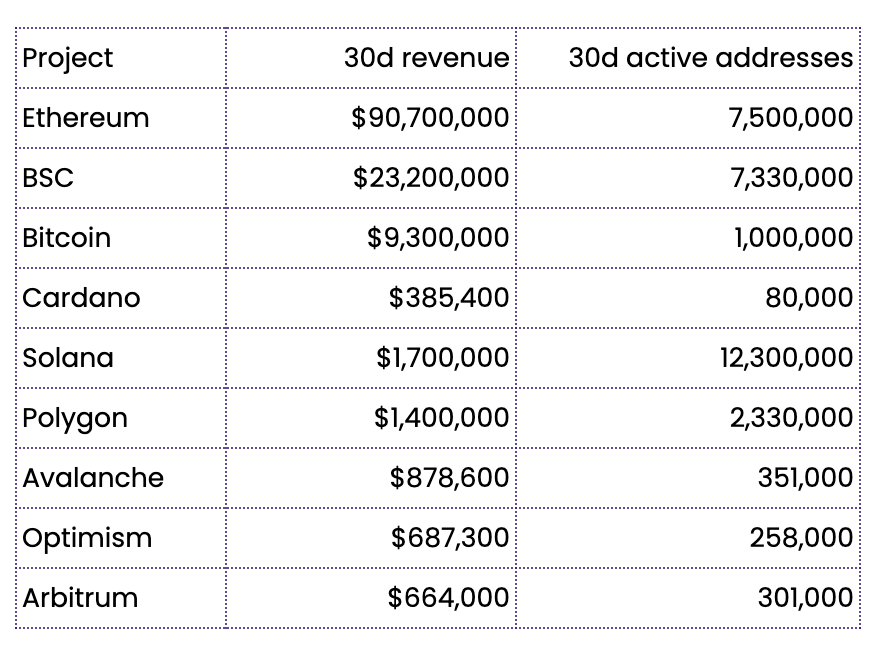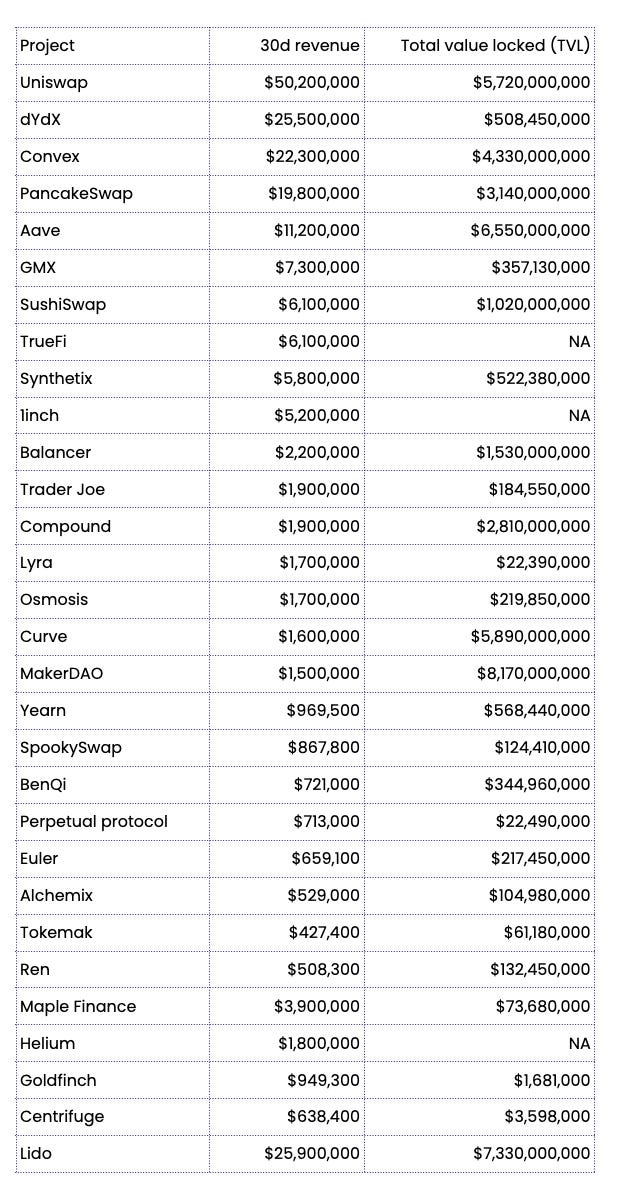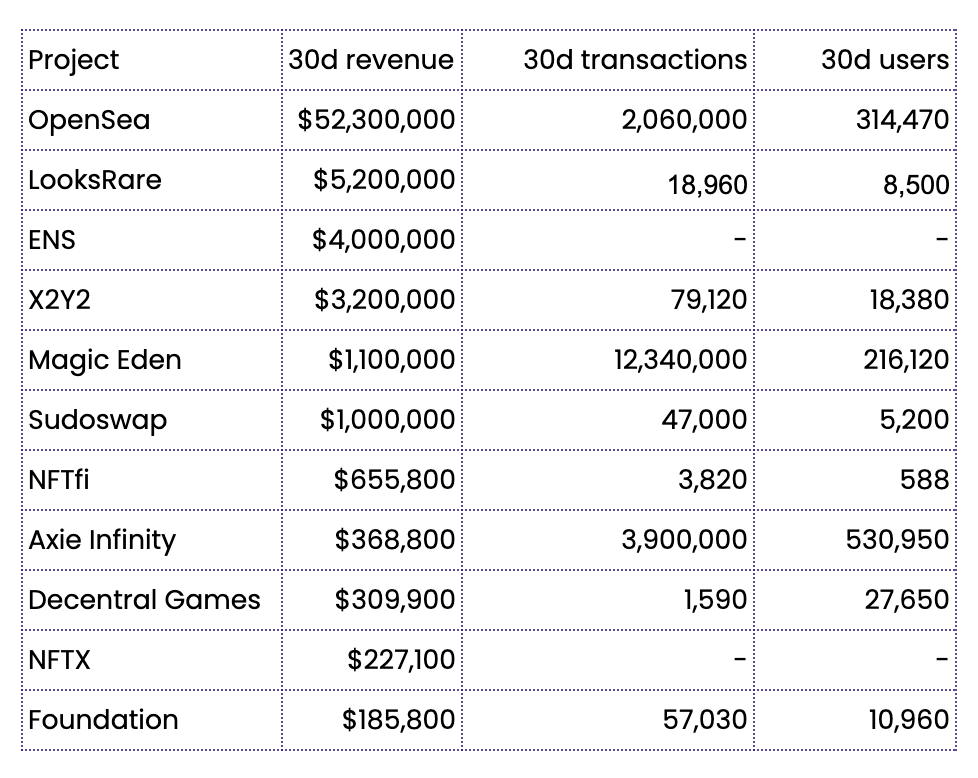I have been working with multiple crypto founders and one calculation that sparks the most heated discussions is the TAM (total addressable market). Now having been in the VC space for the past 2 years, I understand the value of being cautiously optimistic. Nonetheless, inflated expectations of user acquisition and growth often end up hurting projects in the long run.
Confusing Calculations
Most prudent founders have a best case, most likely case, and bear case model but humans are hopeful creatures. We often end up (subconsciously) leaning towards a revenue of ‘US$ 86.4mn per day’ (case in point: Sui - which still managed to close an oversubscribed round at a ~US$2bn valuation).
To put this number in context, Ethereum earned less than US$ 2.1mn per day over the last week and it outpaces the other protocols/dApps in revenue by a large margin. Let’s exclude Ethereum and see the revenue/day stat for the other prominent blockchains.

Now, I don’t have enough data to substantiate or dispute Sui’s revenue projections. The team does come from a stellar background and is backed my billionaire VCs - so I’m sure (I hope and I pray) there must be a strong model that supports this projection. The point to take away from this case study is one must use historical data to ground revenue and user projections and plan the start-up’s financials accordingly.
User and Revenue Data For Popular Protocols
In the recent market down turn I’ve seen a lot of young start-ups shut the shop and even giants like Coinbase and OpenSea have eliminated workforce to survive in the crypto winter. It is heart breaking to watch this happen and hence I have scoured through multiple Dune, Nansen, Messari, Token Terminal dashboards, project websites and Dapp Radar pages to collate the user and revenue data for popular protocols. Hoping this can help founders model this financials prudently and save my fellow investors from harmful exuberance. (Free research help for whoever can put me in touch with an analyst who worked the Sui deal - I have a few questions)
Sector 1 - Blockchains

Ethereum is an outlier when it comes to revenue generation. It supports a massive dApp + layer 2 ecosystem which generates a consistent demand for blockspace on the base protocol. Binance Smart chain and Solana provide cheap and fast transactions. A lot of the activity (both in terms of revenue and addresses) can be attributed to their deFi applications.
Bitcoin is a store of value asset and a dedicated team is trying build L2 solutions for the marquee chain. The number of wallets which hold Bitcoin are much higher than the number of addresses that interact with the chain. Polygon, Avalanche, Optimism and Arbitrum are in their growth phase and will likely give stiff competition to the incumbents in the next bull run.
Sector 2 - DeFi (++)

The ‘++’ stands for projects related to deFi such as Maple Finance, Helium, Lido etc. What is important to remember while structuring models for a deFi protocol is that a large part of a multi-million TVL comes from a small pool of users and these users are hard to acquire. Vanilla token farms have been drained of liquidity in weeks and the mercenary farmer moves to the next protocol very frequently. Even institutions like Polychain and Alameda are known to yield farm purely for the APY - so protocols must build in:
Very strong value propositions
Intelligent token lock-in designs
Case in point: Uniswap has been forked 291 times but it continues to be the market leader with a gap of over US$2bn+ (in TVL) between Uni and the next player. Sushiswap which famously conducted a vampire attack on Uniswap has gone ahead to build a popular suite of products - making a strong moat for itself. Nonetheless, the DAU (wallets) for Uniswap (v3) is 11,580 and for Sushiswap is 3131.
Lesson learnt: big volumes are moved by whales/power users who are difficult to attract for a long term. Factor this in.
Sector 3 - NFTs

NFTs are notorious for creating eye-catching headlines. Infact Beeple’s US$ 69mn sale single handedly ushered in a bull market for NFTs. It must be noted that a large part of the NFT volume is wash-traded. When X2Y2 was launched, traders mercilessly trade mined the protocol by buying/selling dummy NFTs. The folks at BitsCrunch are creating a useful wash-trading detection tool which I am looking forward to using.
The macro here is it takes a lot of data slicing and cleaning to understand the true volumes being generated by NFTs. Furthermore, for a certain period, post the success of Axie Infinity, P2E became the new deFi. It is hard to make a game (and its NFTs) sustain over long periods of time. The teams must develop ways of recycling the old NFTs into new games and consequently they must factor in the lack of revenue old gamers will bring to new games when (and if) they migrate.
Closing Thoughts
I recognize that this post lacked hopium, but while modeling financial projections it is important to stick to the principles of conservatism - a virtue which is tough to hold on to in the current blockchain ecosystem. Calculating the TAM is tough for user behaviors that are new but founders can use historical data present for a protocol that tried to do similar things. For example, back in the day, analysts used the total taxi market of New York to calculate the TAM for Uber. When Airbnb came along, the hotel industry provided good proxies to calculate what the market could look like.
Blockchains provide a democratized access to data for protocols, closing this post with the top 10 dashboards that I find useful during my market research.
Dune - it has tons of community built dashboards tracking data directly from the smart contracts
Dapp Radar - an easier to use version of Dune, but the data isn’t as rich
Token Terminal - calculates protocol revenue which were widely used in this blog
DefiLama - easy to understand deFi data
Skew - best for derivatives data
Glassnode - offers one of the most descriptive protocol data
Nansen - amazing tools, helps you find alpha on-chain
Covalent - very helpful API classes, indexes 40 blockchains
Breadcrumbs - great for on-chain sleuths
Cryptoslam - great place for NFT data




